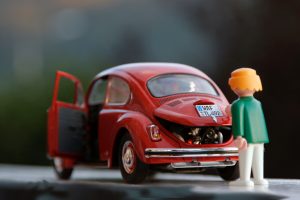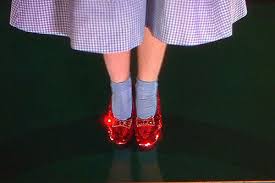 Brrrr…it’s cold in most of the country. We spend more time indoors. What’s your favorite indoor activity? I bet reading immediately sprang to mind!
Brrrr…it’s cold in most of the country. We spend more time indoors. What’s your favorite indoor activity? I bet reading immediately sprang to mind!
Is your book collection organized so you can find just the right book you’re in the mood to read? Excellent! Or like many folks, are books scattered around the house? Do you even know what books you have? Do you regularly purge unwanted books or let them continue to occupy valuable space and collect dust?
Now is a great time to organize your books. Here are 11 tips.
My largest book organizing project was 17 years ago with my first client. In his library he had between 1,000 and 2,000 books. They were out of order. There were duplicates and triplicates. His library was completely nonfunctional. It took time, but after donating many of them and organizing the rest according to my client’s preferences, that massive job got done. My client was thrilled to have a functional library that looked great too!
For my personal collection, I mix it up. Fiction books are arranged in alphabetical order by author’s last name. Books in other categories (such as organizing, business and design) are separated by category but not in any order. Some books are vertical. Some are horizontal. Small framed photos and pieces of art add to the overall look. I donate books that no longer interest me. My book collection is functional and attractive. With a little time and effort, yours can be too.
Downsizing and organizing your books is worth doing. Then, when planning your next vacation, you can quickly grab the ones you want to read – much better than wasting time searching around the house or wasting money buying more at the airport.
Click on the above title to learn more about the featured author.
Do you ever open your closet and think, “I have nothing to wear!”? Do you ever feel like you have certain “go-tos” and you ignore the rest of your closet? Do you keep things because they might come back into style?
Imagine a different scenario. Imagine a closet filled with only those clothes that ‘spark joy,’ clothes that make you feel confident and amazing, clothes that are comfortable and cared for. In just five hours, it can!
The New York Times bestseller, The Life-Changing Magic of Tidying Up, by Japanese de-cluttering guru Marie Kondo, teaches you how. As a member of the first class of KonMari consultant trainees, I love spreading the KonMari idea of #organizetheworld. Please see below my own take on how you can tackle the clothing category using the KonMari method, step by step.
Step One:
Find a time in your schedule when you can get five hours, distraction free. No kids. No husbands. No phones. This is YOUR time.
Step Two:
Pile every item of clothing on the bed.
Take a ‘before’ picture!
Step Three:
Divide the clothes into broad categories like: Tops, Bottoms, Skirts, Pajamas, etc. Don’t worry about deciding what to keep yet. Focus on sorting, not discarding.
Step Four:
Now this is where the magic really comes in. You are going to take each and every item of clothing in your hand and ask yourself: Does this spark joy? Pay attention to how the garment makes you feel. Does it give you a jolt of happiness? Do you love wearing it? Or do you frown, think about feeling frumpy, or have a bad memory?
A few tips:
Step Five:
Put all of your donations and items to sell right in the car! While you have them sorted, you can even enter the donations into an app like It’s Deductible or onto a printed Goodwill checklist. You can save thousands at tax time with donations!
Step Six:
Put all of the clothing that sparks joy back into the closet and folded in their drawers. To learn how to do Marie Kondo’s special folding method, visit this video. Think about using all that extra space in your closet to display your favorite items. I put my favorite books and my grandmother’s milk glass on the top shelf of my closet, where all of my bulky sweaters used to fall over onto each other. Some people hang artwork inside the doors or display wedding photos.
A few tips:
Now sit back, take that after photo, and enjoy! After just five hours and six steps, you’ve created a closet that gives you joy, easy mornings and a boost of confidence.
Click on the above title to learn more about the featured author
 It’s January again, which means New Year’s resolutions and packing away holiday decorations. January is also considered ‘GO Month’ aka Get Organized Month in the world of organization. We all set new goals of what we would like to achieve, but what if this year we focus on one location where we spend more time than we think; our cars. According to the AAA Foundation for Traffic Safety, Americans spend, on average, over 290 hours in our car EACH YEAR. If I’m going to spend the equivalent of seven work weeks driving my car each year, I want to make sure I am comfortable and prepared. Organizing your car is an accomplishable goal that will enhance your everyday life and can be achieved in an afternoon. Below are a few easy steps to follow on cleaning out your car and what supplies you need for safety and convenience.
It’s January again, which means New Year’s resolutions and packing away holiday decorations. January is also considered ‘GO Month’ aka Get Organized Month in the world of organization. We all set new goals of what we would like to achieve, but what if this year we focus on one location where we spend more time than we think; our cars. According to the AAA Foundation for Traffic Safety, Americans spend, on average, over 290 hours in our car EACH YEAR. If I’m going to spend the equivalent of seven work weeks driving my car each year, I want to make sure I am comfortable and prepared. Organizing your car is an accomplishable goal that will enhance your everyday life and can be achieved in an afternoon. Below are a few easy steps to follow on cleaning out your car and what supplies you need for safety and convenience.
Step One
Clear everything out of your car…and I mean every penny and empty coffee mug! Sort everything into three piles; ‘Toss’, ‘Put Away’, and ‘Keep in Car’. The ‘Toss’ pile is all the junk you want to throw away; wrappers, receipts, bottles, etc. The ‘Put Away’ pile might mean it goes in the house, back to the office or needs to be returned to a friend. The ‘Keep in Car’ pile is everything that belongs in your car. Cross-reference the list below to decide what stays and what goes.
Step Two
Clean the car inside and out. Start by vacuuming from the top down, including the upholstered ceiling since dust builds up on soft surfaces. Don’t forget to remove any floor pads and vacuum under them and the pads themselves. Next, dust all of the hard surfaces and wipe down the windows. I use Swiffer dusting wipes and I usually buy the generic brand at the local dollar store, they work great! After dusting, I use ArmorAll Original Protectant Wipes ($10.79 for a 3 pack at Target) on all of the hard surfaces and glass wipes for the windows and windshield. You can also use a damp rag or any other car interior polish you’d like. For really dirty jobs you may want to consider shampooing your upholstery.
I like to do this stage at my local self-service car wash. This way, I don’t have to worry about lugging a vacuum in and out of the house or hooking up the hose. I keep the interior wipes along with some window wipes in my car at all times so I can just roll up and pay a few dollars for their vacuum and then wash the exterior and be on my way.
Step Three
Now we address our three piles. First, throw away anything labeled ‘Toss’. That was easy! Next, anything that was deemed ‘Put Away’ should be contained in a box or a bag and immediately brought inside. If your like me and decided to clean the car off site, make sure everything is contained to be brought inside and put away. Now it is time to put the ‘Keep in Car’ pile away. Below, I have provided a list of what every car owner needs and added notes and suggestions on how to use each item and where they are best stored.
Car Essentials
SAFETY – Almost all of this can be kept in the trunk
CONVENIENCE ITEMS
Follow these three easy steps and you’ll be ready to plan your 2017 road trip! Happy New Year!
Click on the above title to learn more about the featured author
 Relocation is one of those infamously “stressful” times of our lives. Even those of us who are veterans will admit to the fact that the sheer amount of facets that need to be managed during a move adds some level of anxiety.
Relocation is one of those infamously “stressful” times of our lives. Even those of us who are veterans will admit to the fact that the sheer amount of facets that need to be managed during a move adds some level of anxiety.
Whether moving near or far, change is part of the package – new people, new schools, new jobs, new neighborhoods, new neighbors and yes, a new home.
My husband’s corporate job moved us (a family of five) around the U.S. for a period of over 20 years. I realized from the very beginning that this would be a way of life for our family for quite some time. In order for us to not only keep our sanity but actually enjoy the adventure, I needed to have a plan. Essentially, my plan developed from taking a step back and seeing the big picture. I asked myself:
By answering these questions, I was able to prioritize the steps of our move and create a repeatable process to carry us through each successive relocation. I hope that my answers might help you look at your own family’s needs in the face of one or multiple moves.
What will our nomadic life look like?
Truth be told, many a friend and family member worried aloud about how my children would fare growing up without the consistency of a hometown, schools and friends. I chose to envision a life that would be enhanced by our travels – my children would learn that people are people wherever you go, no matter how they look or sound. They would experience cities and environments rather than merely reading about them – things like walking on Mt. Rainier (an active volcano), battling to walk down Michigan Ave while leaning into the Chicago wind, and watching dolphins jump in the coastal waters of Florida. I shared my vision and excitement with the rest of my family and let them know how lucky we were!
What can or will change?
Almost everything! As far as living spaces were concerned however, the changes involved the size and number of rooms and the amount of storage. Would the garage be large enough for cars, bikes and storage? Would there be a basement? Would the kids each have their own rooms or will they have to double up? Some changes were welcome, others less than desirable. Adding some creative storage and decorative accents always helped with the adjustment.
What can or needs to stay the same?
I decided that since all of our surroundings including most of the people would be changing, it would be important to preserve things that gave us “roots”. With each move I kept much of our décor the same, especially for the kids. I would hang their curtains right away and keep the same bedding. Those things changed at times when they grew out of them. We would have weekly letter-writing sessions in order to maintain relationships with family and friends. This had so many benefits: family time together, honing writing skills, honing relationship skills. I also made it a point to cook traditional holiday recipes so that we wouldn’t forget our family background and would feel connected on holidays when we couldn’t actually attend in person.
What will support each family member?
This is where organization really became essential. It is difficult to be successful, in anything and at any age, if your surroundings continue to change. Therefore, I would set up each home with consistencies. Kitchens were always arranged with table settings nearest the table and furthest from my cooking area so that kids could help and not be underfoot. Drawer items in kitchen, bedrooms and bathrooms were set up in similar order from house to house. Garage and laundry bins followed suit. Within no time, everyone knew where to find what was needed regardless of the new home layout.
Even though you may move often: embrace your life, be kind to yourself and your family and you can always be living at Home.
Click on the above title to learn more about the featured author.
 So much of getting organized is about building new habits. To maintain those habits, you have to exercise your organizing muscles regularly. Below are a few exercises to help you get into shape.
So much of getting organized is about building new habits. To maintain those habits, you have to exercise your organizing muscles regularly. Below are a few exercises to help you get into shape.
Remember, one of the fastest ways to feel lighter is to exercise your organizing muscles by shedding pounds of clutter. Happy New Year!
Click on the above title to learn more about the featured author.
 As 2016 is winding down, we embark on a new chapter in our lives in the New Year. For most, the challenge is to figure out our purpose in life and what we would like our story to be for 2017. We all have a purpose in life and it’s just a matter of being conscious, and knowing and believing that there is a divine order.
As 2016 is winding down, we embark on a new chapter in our lives in the New Year. For most, the challenge is to figure out our purpose in life and what we would like our story to be for 2017. We all have a purpose in life and it’s just a matter of being conscious, and knowing and believing that there is a divine order.
What is our story going to be at the end of 2017? Will we finally tackle those pockets of clutter in our homes, workplace, and minds? Or, are we going to continue telling ourselves “I’ll get to it someday?” Are we finally going to be committed to eating healthy? How about creating financial wealth or establishing loving and positive relationships? Although love, peace and harmony will be the driving force to change, making a commitment to change is certainly a step in the right direction. When we don’t go through the process of taking care of those things that are affecting our health, mindset, relationships, monies, careers and our spiritual being, it become a vicious cycle that hold us back from our goals. Once we decide to change our mindset, everything we need comes our way.
One way to start moving in the right direction is to create a vision board. A vision board is a way to put on paper what you would like your life, home, workplace, etc., to look like. All you’ll need is a sketchbook, old/new magazines, markers, pens, scissors, glue, etc. to get started. Why not spend this holiday season creating your vision board and put on paper what you would like 2017 to look like?
Happy New Year!
Click on the title above to learn more about the featured author.